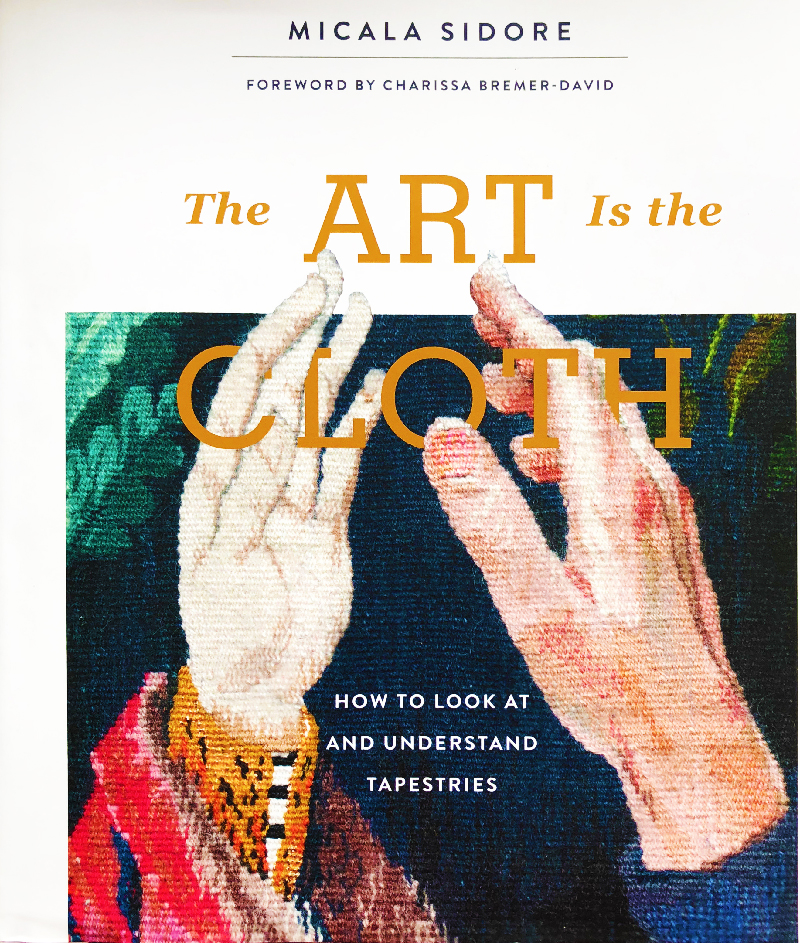 The Art Is the Cloth: How to Look at and Understand Tapestries by Micala Sidore; Schiffer Publishing, Atglen PA 19310, USA, 2020; 223 pages, 620 colour and 4 black-and-white photos, price US $ 45
The Art Is the Cloth: How to Look at and Understand Tapestries by Micala Sidore; Schiffer Publishing, Atglen PA 19310, USA, 2020; 223 pages, 620 colour and 4 black-and-white photos, price US $ 45
Micala Sidore, a tapestry weaver in her own right, began work on this book after organising an eponymous travelling exhibition of tapestries by 60 weavers from Canada, Mexico and the United States.
This is a surprising book, not only because of the many weaving artists it portrays but also for the unusual way in which they are presented. The works, both old and new, are arranged into nine chapters which allow readers to appreciate what tapestry weavers seek to achieve in their art. The great majority of the tapestry weavers discussed here belong to the new world-wide weaving movement which emerged in the wake of the Australian tapestry exhibition, “World Tapestry Today”. This exhibition was organised by the American Tapestry Alliance in collaboration with the Victorian Tapestry Workshop; it toured Australia, Europe and the USA in 1988/89, accompanied by a symposium entitled “Tapestry Today” held in Melbourne in 1988. It was a manifestation of the global re-focus on tapestries woven by artists themselves. The personality of the tapestry weaver Archie Brennan played an important role in this movement.
Micala Sidore does not mention the movement as such, but she does give a comprehensive insight into what those weavers are after, often illustrated by examples of famous historical tapestries. She briefly discusses technical matters in Chapter one; the subsequent eight chapters suggest ways in which tapestries relate to the art of clothmaking. “I have tried throughout to include many variations within these categories”, the author writes. The chapters are:
1.The Elements of weaving
2.Special Materials
3.Visual Themes, Adapting the Past to the Present
4.Trompe-l’œil
5.Directionality
6.Textiles and Identities, When Textiles Define a Particular Group
7.Self-Reference
8. Historical Self-Reference
9.The Art in the Cloth
To give some examples, the Special Materials chapter starts with horsehair used by the Buryats from Siberia, then mentions iron and copper as well as other materials like pearls, badges and so on employed in tapestries by contemporary artists. Chapter 3 gives some examples of centuries-old verdures and millefleurs tapestries and their modern variations by artists around the globe. The author treats all nine chapters in this way, providing an inside view of tapestry. Her approach to structuring the book is fresh and inspiring, not only for newcomers to tapestry but also for those who have liked this art for a long time, such as myself.
Aside from the way in which artworks are organised in this book, I was equally impressed by the number of artists featured (238), many of them, of course, from North and South America, but also many from Europe and other parts of the world. This may be thanks to the fact that Micala Sidore obtained her tapestry education in France and is a broad-minded person accustomed to travelling widely.
An example from Europe I noted was “Opus 1: Persian Variations” by Antje and Ulrich Müller-Reimkasten, a tapestry I admire very much but have never seen in any book. Moreover, the book devotes much well-deserved space to the “Seven Marias” by Andrea Milde, a work which, as far as I am aware, was only shown in Hungary and Lithuania. How did the author come to know about it?
The title of the book stems from a fax sent to the author by Helena Hernmarck, another iconic figure of the new tapestry movement, which read “the art is the cloth”. Archie Brennan himself used to repeatedly remind his students that tapestry is a piece of cloth. The simple fact that the foundation of the artwork and the artwork itself are one, is unique to tapestry. Micala Sidore could not have found a better title.
It goes without saying that I strongly recommend buying this very beautiful book which can help readers see behind the scenes of tapestry making as an art form.